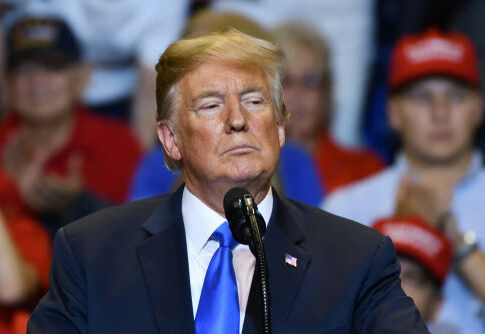President Trump’s federal surge in Washington, D.C. marks a direct challenge to unchecked urban crime and signals an aggressive stand against policies that have long undermined public safety and constitutional values.
Federal Law Enforcement Surge Follows High-Profile Crime
President Donald Trump ordered a major increase in federal law enforcement across Washington, D.C. following a disturbing assault on a former DOGE employee, known publicly as “Big Balls.” This incident, which occurred in early August 2025, catalyzed the administration’s deployment of a specialized task force, fulfilling Trump’s vow to restore safety and order to the nation’s capital. The new “Making DC Safe and Beautiful Task Force” unites Homeland Security Investigations, FBI, and DEA with local police, targeting neighborhoods plagued by violence and lawlessness. Operation began at midnight August 8, 2025, set for seven days but with the option to extend if needed.
DC’s unique status as a federal district means the President holds broad authority to intervene, especially when local leadership fails to curb rising crime. While official data shows violent crime in D.C. dropped a notable 35% in 2024, high-profile incidents and persistent public unease demand decisive action. The city’s 2023 homicide rate was the highest in two decades, and many residents remain unconvinced that underlying dangers have truly subsided. Past interventions, mostly during civil unrest, never addressed systemic issues; Trump’s task force aims to break this cycle by combining federal muscle with local knowledge.
Executive Order Targets Violent Offenders and Illegal Immigration
Trump’s executive order mandates federal agencies not only to support local police but also to review prosecutorial policies and maximize pretrial detention for dangerous criminals. A key directive is the aggressive enforcement of immigration law, with teams authorized to apprehend and deport undocumented individuals found in connection with violent crimes. This policy directly confronts sanctuary practices and puts federal priorities above local resistance, signaling a shift toward zero tolerance for lawlessness and disorder. The administration frames these actions as defending American families and constitutional rights—especially those eroded by previous “woke” and globalist policies that, in their view, opened the door to rampant crime and government overreach.
White House Press Secretary Karoline Leavitt reinforced the administration’s position: “There will be no safe harbor for violent criminals in D.C.” This message resonates with conservative Americans who have long demanded accountability and restoration of law and order. The operation’s success will be judged not only by crime statistics, but by how well it reestablishes faith in the rule of law and the government’s willingness to protect its citizens.
Federal vs. Local Authority: Tensions and Public Reactions
Federal intervention in local policing raises critical debates about autonomy and civil liberties. D.C. Mayor Muriel Bowser, previously praised for crime reduction, now faces a federal override that exposes the limits of local efforts. Coordination between federal and local agencies is essential to avoid friction and maximize effectiveness, but political and community tensions remain high. Residents, lawmakers, and businesses are directly affected—some welcome increased security, while others voice concerns about overreach and the impact on minority and immigrant communities.
President Trump increases federal law enforcement presence in DC following violent crime surge https://t.co/mW5wCiR8Mq
— Cath (@cathpatriot) August 8, 2025
The surge also carries economic and social implications. Improved public safety could boost tourism and business confidence, yet disruptions and fears of heavy-handed enforcement may undermine community trust, especially among those already wary of law enforcement. Experts caution that while such operations can deliver short-term relief, sustainable safety requires deeper reforms and outreach. The Trump administration’s approach sets a precedent for future federal-local partnerships—or conflicts—in urban crime control, with D.C. serving as a national test case.
Sources:
AmberStudent crime and safety guide for D.C.
Metropolitan Police Department (MPD) official crime data
The Heritage Foundation analysis
Council on Criminal Justice crime trends report
U.S. Department of Justice press releases

